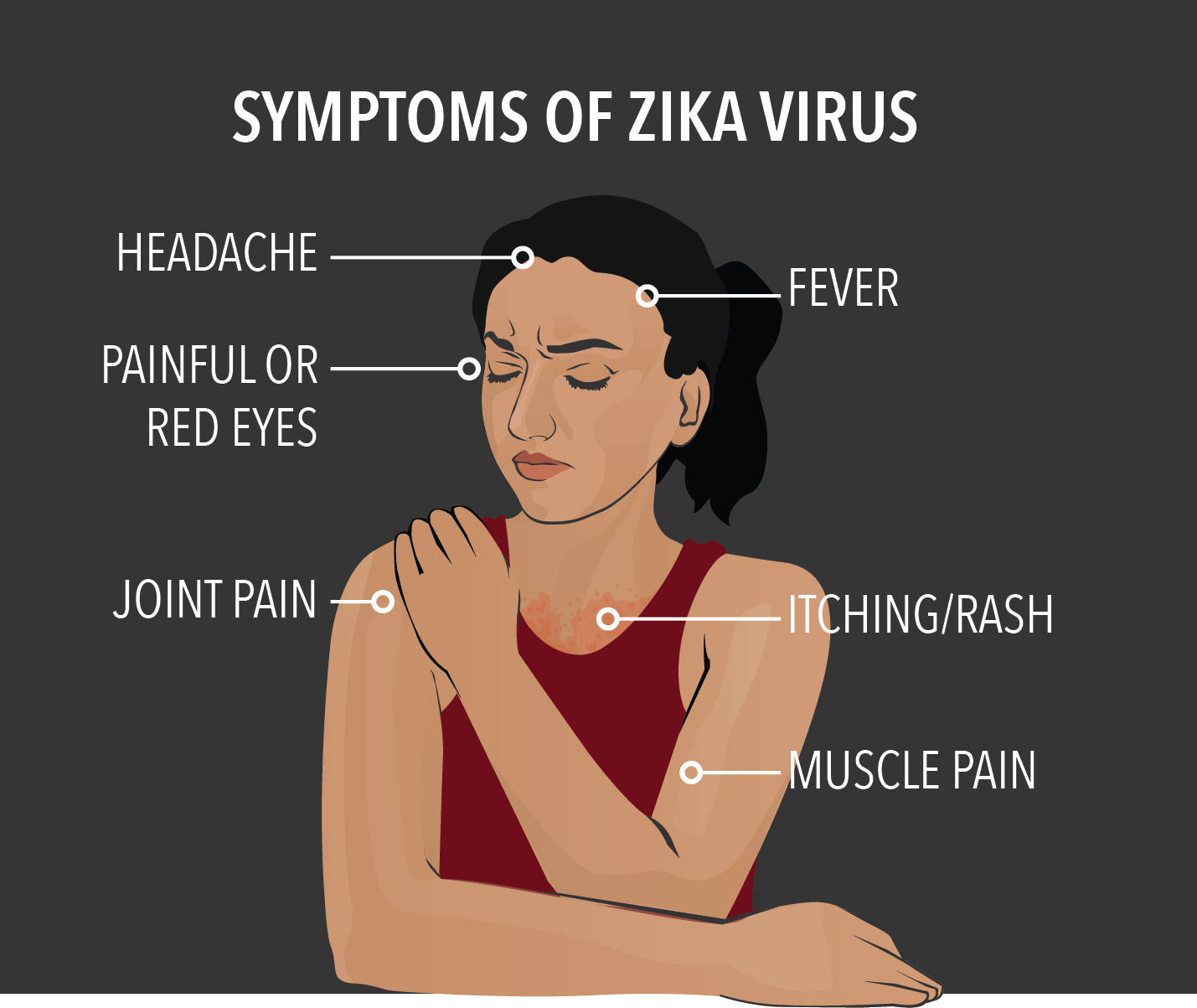
Zika is transmitted via infected Aedes mosquitoes. Aedes mosquitoes are found on all continents except Antarctica. They are most active during the early morning hours and at dusk. These same mosquitos are responsible for the transmission of several other arboviruses, including dengue, chikungunya and West Nile. They are identifiable by black and white markings on their legs and body.
Vector Surveillance And Control

(Source: http://cdc.gov/media/dpl/2016/dpk-zika-virus.html)
Symptoms of Zika virus include headache, mild fever, muscle and joint pain, rash and eye inflammation. Symptoms are generally mild and rarely require hospitalization. The incubation period is thought to be several days from exposure and the infection lasts 2-7 days.

Source: https://en.wikipedia.org/wiki/Zika_virus_outbreak_(2015-present)
Most people will not suffer any long term effects after Zika virus infection. However, there has been an increase in reporting of microcephaly, pregnancy loss and Guillain-Barre syndrome is some areas of Brazil where Zika is present, though the exact link is under investigation at this time.

Source: https://en.wikipedia.org/wiki/Zika_virus_outbreak_(2015-present)
Zika infections tend to be mild and generally require only supportive treatment. Over the counter pain relievers may be used to treat fever and body aches. Patients should rest, and drink plenty of fluids. If symptoms worsen, seek care from a medical professional.
There is no specific treatment for Zika and no specific diagnostic test. Zika closely resembles other arboviruses and may not be distinguishable in testing. There is no vaccine for Zika; however, infected persons may develop lifelong immunity to the virus.

Transmission Electron Micrograph of Zika Virus
(Source: http://www.cdc.gov/media/images/dpk/2016/dpk-zika/zika-virus-microscope-1000px.jpg)
To prevent infection, travelers should avoid regions where Zika has been identified. A list of those areas can be found here:http://www.cdc.gov/zika/geo/index.html
Women who are pregnant or plan to become pregnant should seek advice from a medical professional before traveling to affected areas. Avoid outdoor activities when mosquitos are most active-early morning and evening. Wear protective clothing, such as long sleeves, pants and hats, and insect repellant when outdoors. Stay in screened or air conditioned rooms or use mosquito netting to protect against bites. Do not have unprotected sex with a partner who has had or been exposed to Zika, as it is unknown how long the virus remains in semen or blood.
Reduce mosquito activity by emptying, treating or avoiding standing water in birdbaths, pet bowls, garden containers, pools or ponds.

|
